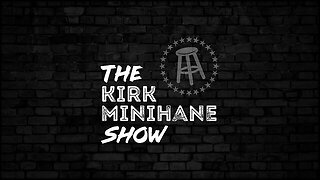Deeper Review on Mechanical Removal of Bush Honeysuckle Using the “Pullerbear Pro - XLT”
This video goes a little more in depth with the techniques I use for the second stage of bush honeysuckle removal using the Pullerbear pro, and some personal safety tips while working out in the forest.
Non-native Bush Honeysuckle like Amur (Lonicera maackii), Morrow’s (Lonicera morrowii), and Tatrian (Lonicera tatarica) will out-compete native forbs and bushes because it is the first to leaf out in the spring, and last to lose its leaves in the fall.
Some things to report from this visit during this video - for research data, and for other forest and wildlife managers:
I have been noticing that a few of the large stems that were cut last fall were trying to regrow roots on those cut ends, and were also sprouting green shoots of leaves. Though in total this was an uncommon occurance, there was a greater prevelance in areas with higher soil moisture present such as near a stream-bed or in deeper shaded areas. Although these were easily dislodged by a nudge of the foot or picking them up to break contact of the new root system with the soil, it goes to show the competativeness of the species and the importance of followup visits after the initial treatment stage.
This data lends weight to my opinion that there would be an advantage of using a controled burn of the forest floor early in the spring prior to the other trees and plants coming out of dormancy. This should remove the stems and sprouts of the Bush Honeysuckle that might be trying to retake the forest floor. As I have done in my treatement areas, It would be important to keep the woody fuel of the branches and trunks of the honeysuckle close to the ground. By taking extra time to cut the branches until they lay near the forest floor, no only does it help with the ease of mobility within the forest, it will also help carry the fire through the forest once lite; also decreasing risk of the fire burning to hot and traveling higher into the canopy.
Observations of stumps treated with Tordon RTU shows anectdotal data that the method of application has a high success rate, with only a few occasionally having enough resistance to avoid death and send sprouts back up in the spring.
Sprouts from smaller stems, which were cut down in this first treatment to avoid having pungy sticks left behind causing a tripping hazzard, did resprout as expected. These stems were cut low on the first treatment to avoid possible injury of someone falling on the stems. This stems do show signs of stress where the majority of them have visible leaf desication on the edges of a few leaves per plant. Not sure if this is from the stress of the cutting late in the fall, or if it is from some disease affecting only the bush honeysuckle species.
Areas treated with mechanical removal have shown promising signs of regenerated native species in the understory, and a comparison between the diversity of species present is suggested when compairing a fall treatment vs. an early spring treatment using the mechanical method with a direct chemical application to large stumps.
Tools used for treatment:
Stihl Kombimotor - Brushsaw blade
Tordon RTU
Stihl Chainsaw (Model MS 271 "Farmboss")
Pullerbear Pro XLT (https://pullerbear.com/)
Foam Brush (for Direct Chemical Application on cambium of stumps).
-
 LIVE
LIVE
The Charlie Kirk Show
2 hours agoKamala's Emotional Support Walz + Jack Smith Doubles Down + Tulsi & the Justice League | Sharf, Carl
12,231 watching -
 2:03:37
2:03:37
The Dilley Show
3 hours agoTrump Indicted again! Covid Re-visited and More! w/Author Brenden Dilley 08/28/2024
29K13 -
 LIVE
LIVE
The New American
54 minutes agoNew American Daily | Jack Smith Revives Case Against Trump. Will He Succeed This Time?
263 watching -
 LIVE
LIVE
The Kevin Trudeau Show
3 hours agoThe Kevin Trudeau Show | Ep. 43 LIVE at 1 PM CT
358 watching -
 1:01:14
1:01:14
Officially Unfollowed
4 hours agoRFK J. Endorses Trump, Tim Walz Is Lying About His Dog, and Victoria Secret is BACK | Ep. 5
19.2K33 -
 19:08
19:08
Neil McCoy-Ward
1 hour agoHow On Earth Did It Come To THIS?!
2.55K -
 59:45
59:45
The Dan Bongino Show
5 hours agoA Big Piece Of The Secret Service Puzzle Revealed (Ep. 2318) - 08/28/2024
512K1.73K -
 2:32:31
2:32:31
The Kirk Minihane Show
6 hours agoKMS LIVE | August 28, 2024
29.1K1 -
 31:53
31:53
Tudor Dixon
3 hours agoThe Devastating Impact of Illegal Alien Crime | The Tudor Dixon Podcast
14.9K4 -
 54:36
54:36
Steven Crowder
5 hours ago🔴 Dem Panic: Why Kamala picked CNN & Trump Indicted Again
234K446